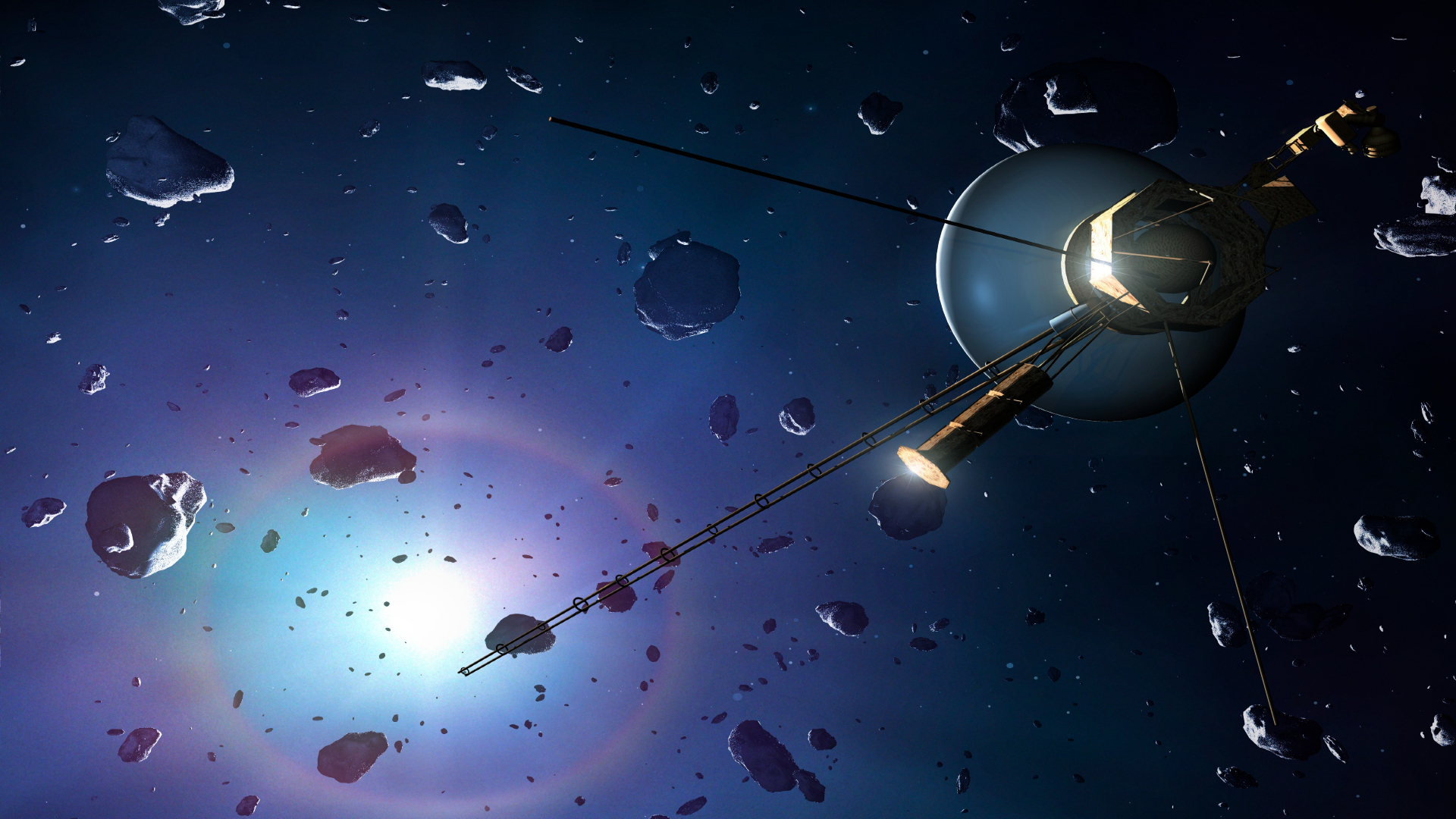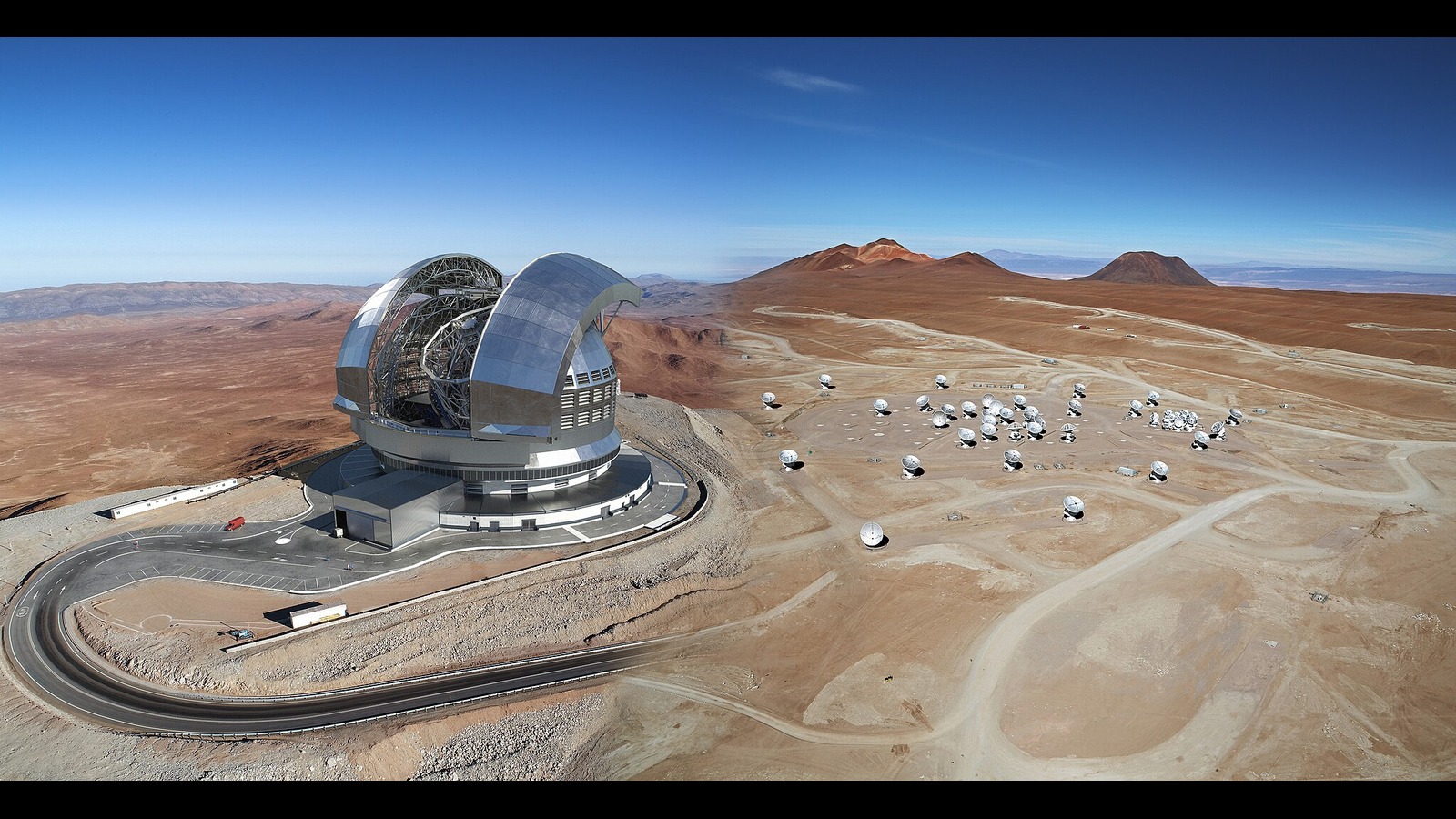Oort cloud: What is it and where is it located?
The Oort cloud lies beyond Neptune.

The Oort cloud is a shell of icy bodies that surrounds the solar system.
It begins beyond the Kuiper Belt and even beyond the influence of the sun’s magnetic field, technically in interstellar space. There may be billions, or even trillions, of objects in it, and some are so large that they count as dwarf planets.
Many long-period comets originate from the Oort cloud. Almost all objects that have approached the inner solar system from the Oort cloud are comets made of frozen gas and dust. But in 2022, as Space.com previously reported, researchers identified an unusual rocky object coming from the Oort cloud.
When the objects in the Oort cloud interact with passing stars, dust clouds or even the weak gravitational tidal forces created by the Milky Way galaxy, they may spiral inward toward the sun, according to a 2019 article in the journal Astronomy & Astrophysics. Or, the objects may be cast completely out of the solar system into distant regions of space.
Although the Oort cloud's existence was first proposed in the 1950s, its extreme distance from Earth still makes it challenging for scientists to identify objects within it.
Oort cloud FAQs answered by an expert
We asked Karen Meech, an astronomer and astrobiologist who specializes in the study of comets a few frequently asked questions about the Oort cloud.
Karen Meech is an astronomer and astrobiologist who specializes in the study of comets and how these small bodies can help us understand how habitable planets form.
What is the Oort cloud made of?
The Oort cloud is a collection of comets, small km-scale icy (and perhaps rocky) left-overs from the process of solar system formation. It is a spherical collection of bodies orbiting the sun.
How did the Oort cloud form?
Stars are formed out of clouds of gas and dust in interstellar space that begin to collapse and flatten into a disk. During this time grains of dust and ice come together and grow larger over time. When objects grow as big as the giant planets, any smaller (km-scale) bodies called planetesimals, that come close to the giant planets get their orbits perturbed. Sometimes they get directed into the inner solar system, but other times they get thrown outward, eventually getting trapped in the Oort cloud.
How big is the Oort cloud?
The Oort cloud extends inward to about 2000 AU (where an AU is the average Earth-sun distance), and out to about 200,000 au.
Where is the Oort cloud?

Because it's so far away, the Oort cloud is difficult to study. But according to NASA, the inner edge of the Oort cloud is likely between 2,000 and 5,000 astronomical units (AU) from the sun. One AU is the average distance between Earth and the sun: about 93 million miles (150 million kilometers). That means that, compared with Earth, the Oort cloud begins 2,000 to 5,000 times farther away from the sun.
The outer edge of the Oort cloud — which researchers predict could be 10,000 AU, or even 100,000 AU, from the sun — might reach nearly halfway between the sun and its nearest stellar neighbor, Proxima Centauri.
Most objects that orbit the sun orbit on the same plane, like the planets, the asteroid belt and the Kuiper Belt. Their orbits keep all of those objects generally in one flat disk around the sun. But the Oort cloud is likely a full sphere surrounding the solar system, like a thick-walled bubble of ice chunks in space.
Who discovered the Oort cloud?
In the 1950s, Dutch astronomer Jan Oort suggested that some of the comets entering the solar system might come from the icy shell that is now named after his work, according to NASA.
Oort and other astronomers noticed that two types of comets travel through the solar system, the European Space Agency (ESA) explains. Those with short periods, many of which might be seen more than once in a lifetime, stem from the Kuiper Belt, a ring of icy particles near the orbit of Pluto. Longer-period comets — with orbits of hundreds, thousands, millions, or even billions of years — probably come from the more distant Oort cloud.
What's in the Oort cloud?
The trillions of objects in the Oort cloud are likely made primarily of water, methane and other ices, according to a 2003 paper in the journal Icarus.
Many Oort cloud objects could be pristine chunks of the sun's early life, formed right at the beginning of the solar system and then pushed by gravity to the outer reaches. Researchers suggest that these comets could provide insight into the environment in which the early Earth evolved, according to NASA.
But not all of the objects out there are the same. The Oort cloud is always changing, and on occasion, some of its residents are permanently booted out of the system through interactions with passing neighbors, according to NASA. Meanwhile, the sun may also capture new inhabitants from the revolving shells surrounding other stars.
Notable Oort cloud objects

Hale-Bopp is a long-period comet that traveled from the Oort cloud. Visible for nearly a year and a half in the late 1990s, it passed within 122 million miles (197 million km) of Earth.
Halley's Comet is also believed to have come from the Oort cloud, although it is now a Kuiper Belt object.
Sedna is a dwarf planet thought to be three-quarters the size of Pluto; it may be the innermost object in the Oort cloud. Discovered in 2003, Sedna has a wildly elliptical orbit that takes it far beyond the Kuiper Belt. The dwarf planet will approach perihelion — its closest point to the sun in the next 11,000 years — in 2073, according to a 2021 paper in the journal Advances in Space Research.
Is the Kuiper Belt the same as the Oort cloud?
No, the Kuiper Belt is different from the Oort cloud. Like the Oort cloud, the Kuiper Belt is a source of comets and is made up of a collection of mostly unknown objects in the outer solar system. However, the Kuiper Belt is a concentrated disk (or belt) of these objects and orbits on roughly the same plane as the planets, rather than the bubble-like shell that researchers think makes up the Oort cloud, according to ESA.
The Kuiper Belt is also much closer to the sun than the Oort cloud is, stretching from about 30 to 55 AU, according to NASA. That makes the closest possible objects of the Oort cloud about 36 times farther away than the farthest objects of the Kuiper Belt.
What's beyond the Oort cloud?
Space! All the rest of it.
Additional resources
For more on comets and comet research, watch this PBS show about the ESA spacecraft Rosetta and its attempt to "catch" a comet. Or, check out this tool from The Sky Live that provides information about how to see interesting comets from where you are. And to experience comet-hunting yourself, read "Comets in the 21st Century: A Personal Guide to Experiencing the Next Great Comet!" (IOP Concise Physics, 2019).
Bibliography
European Space Agency. (2004, February 27). Jan Hendrik Oort: Comet pioneer. https://www.esa.int/About_Us/ESA_history/Jan_Hendrik_Oort_Comet_pioneer
European Space Agency. (2002, April 17). Relationship of the Kuiper Belt to the Oort cloud. ESA/Hubble. https://www.spacetelescope.org/images/opo0204i/
Gibb, E. L., Mumma, M. J., Dello Russo, N., DiSanti, M. A., & Magee-Sauer, K. (2003). Methane in Oort cloud comets. Icarus, 165(2), 391-406. https://doi.org/10.1016/S0019-1035(03)00201-X
NASA. (2022, December 15). Kuiper Belt. NASA Solar System Exploration. https://solarsystem.nasa.gov/solar-system/kuiper-belt/overview
NASA. (n.d.). Oort cloud. NASA Solar System Exploration. Retrieved February 28, 2023, from https://solarsystem.nasa.gov/solar-system/oort-cloud/overview
Torres, S., Cai, M. X., Brown, A. G. A., & Zwart, S. P. (2019). Galactic tide and local stellar perturbations on the Oort cloud: Creation of interstellar comets. Astronomy & Astrophysics, 629, A139. https://doi.org/10.1051/0004-6361/201935330
Zubko, V. A., Sukhanov, A. A., Fedyaev, K. S., Koryanov, V. V., & Belyaev, A. A. (2021). Analysis of mission opportunities to Sedna in 2029–2034. Advances in Space Research, 68(7), 2752-2775. https://doi.org/10.1016/j.asr.2021.05.035
Join our Space Forums to keep talking space on the latest missions, night sky and more! And if you have a news tip, correction or comment, let us know at: community@space.com.
Breaking space news, the latest updates on rocket launches, skywatching events and more!

Vicky Stein is a science writer based in California. She has a bachelor's degree in ecology and evolutionary biology from Dartmouth College and a graduate certificate in science writing from the University of California, Santa Cruz (2018). Afterwards, she worked as a news assistant for PBS NewsHour, and now works as a freelancer covering anything from asteroids to zebras. Follow her most recent work (and most recent pictures of nudibranchs) on Twitter.
